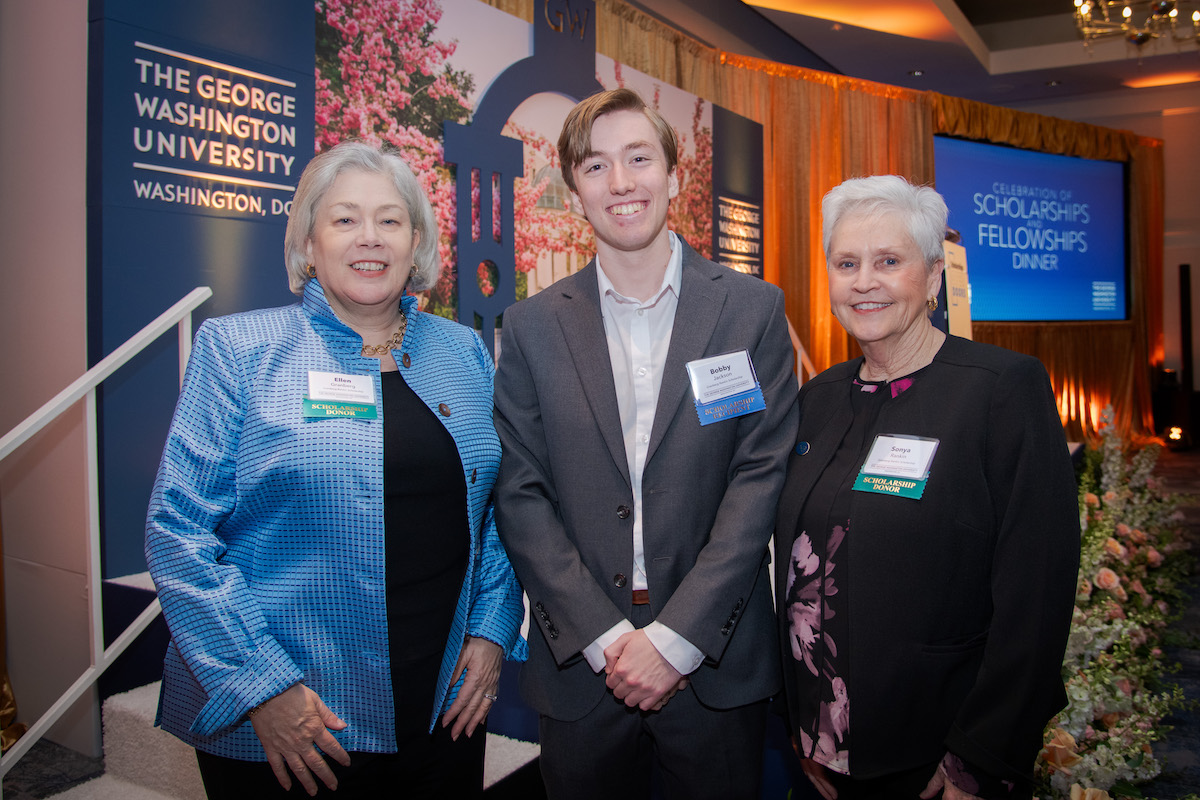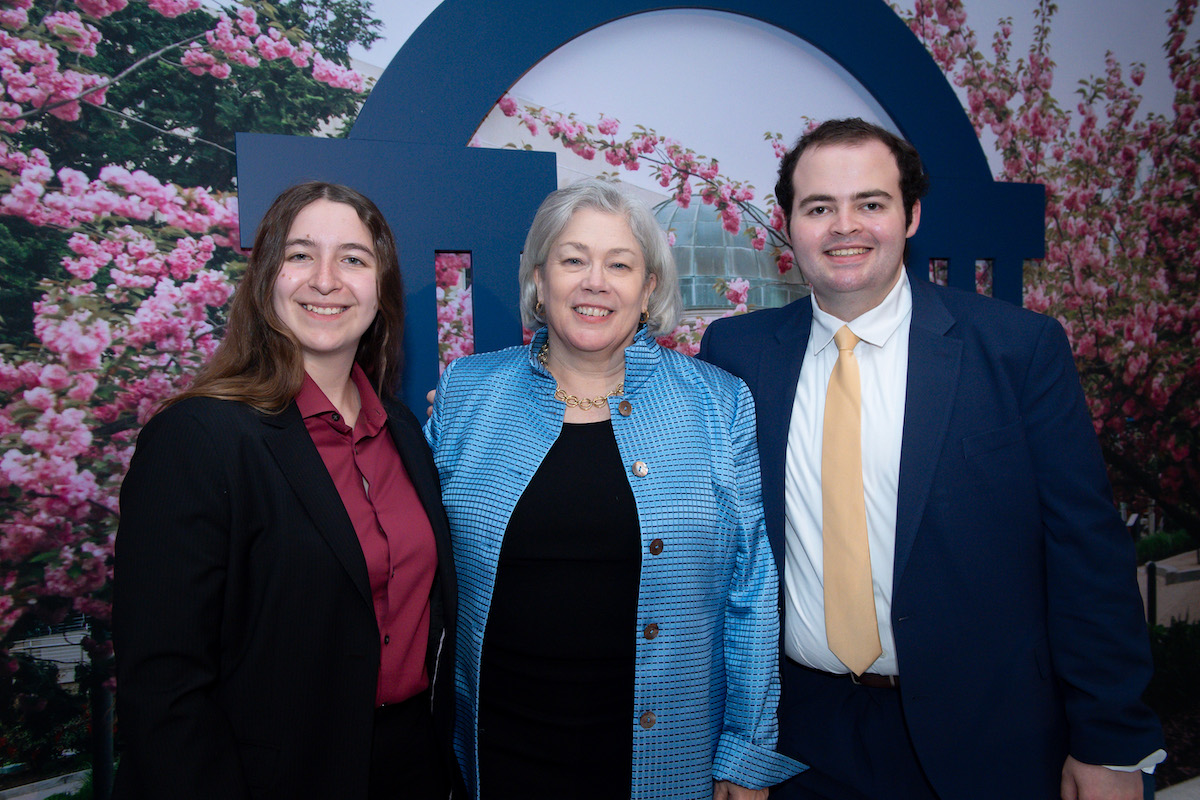Amy Fehr grew up watching her mother struggle with a rare autoimmune condition, being passed from specialist to specialist without clarity or relief. It was at the George Washington University Hospital that Fehr’s mother first found treatments that worked for her—and Fehr started to see her own future take shape.
“Our first dose of hope came from right here on this campus, and I remember thinking that this was the kind of environment that I wanted to learn from,” Fehr said. “I wanted to study biomedical engineering at GW with a community of bold and patient-focused peers and professors.”
But she worried that her dream might be unrealistic: “Going to college is a dream with a steep price tag.” So when she found that she’d not only been accepted to GW but would also receive aid through the Clark Engineering Scholars Program, Fehr was so overwhelmed that she had to take the letter to her parents and have them reread it to confirm the facts.
In 2024, Fehr received her B.S. from the School of Engineering and Applied Science, where she is on track to complete her master’s in biomedical engineering this year. She’s working with a new nanomaterial to build tiny, flexible medical devices that can safely expand and contract with always-in-motion cardiac tissue. All that work was made possible by donor-based financial aid, she told over 200 attendees at the 2025 Celebration of Scholarships and Fellowships dinner in March.
“It’s a line that’s repeated ad nauseam, but that does not diminish its truth: We would not be here without you, and this university would not be what it is without you,” Fehr said.
GW donors gave $33.4 million for scholarships and fellowships last year and saw a 36% increase in the number of new endowed scholarships and fellowships from the year before, Vice President for Development and Alumni Relations Donna Arbide said.
A live demonstration of the community’s passion and commitment was in the offing.
Less than half an hour after announcing that GW’s Third Century Scholarship Endowment Match, launched in 2022 with a $12 million commitment by the university, was only $150,000 away from reaching its goal, Arbide retook the stage. In that brief time, a donor had made a generous commitment bridging the final gap. The match, which provides funds solely dedicated to need-based undergraduate scholarships, was complete.

Fehr, who was scheduled to speak right after Arbide’s announcement, had to mark the moment. “This is not part of my speech, but how amazing is it to see real scholarships being made in real time?”
GW President Ellen M. Granberg attended the celebration not only as a GW leader, but also as a donor herself. She and her wife, Sonya Rankin, established the Granberg-Rankin Endowed Undergraduate Scholarship last year, and this year’s recipient joined Granberg’s table for the dinner.
“A single act of giving, a scholarship, a fellowship, an endowment, plants a seed for future generations of GW students to thrive,” Granberg said. “I’m so proud to join you in support of GW students…How lucky we are that they chose GW, and how lucky the world is that they will build a future with the help of a GW education.”

Peyton Gallant, a junior majoring in political communication in the School of Media and Public Affairs, made GW his top choice after a campus visit. He’d always been interested in politics; as a child, he was nicknamed “the deputy mayor” for his habit of tagging along to meetings with his local politician father. Arriving in Foggy Bottom brought home just how close GW is to the heart of American political life. This, Gallant realized, was where he wanted to be. Like Fehr, he was overwhelmed when he found out he’d received sufficient financial aid to attend; he’d been checking his email in his car and had to pull over.
“Financial aid didn’t just help me attend college, it empowered me to thrive here,” Gallant said.
Now Gallant works in GW’s Office of Undergraduate Admissions, leading tour groups and assisting prospective students. When students confide their concerns about affordability, he shares his own story. Once, during an InsideGW event for admitted students, he recognized a student he’d led on a tour months before—someone who had told him she didn’t think she could afford to come to GW, but who had listened with interest as he took her through his own financial aid journey.
“She rushed over and said, ‘You’re the reason I’m here—you made me believe it was possible,” Gallant remembered.

The annual dinner unites scholarship donors and recipients to share stories and build connections—often in ways neither party expected. Elizabeth Marino joined the Corcoran School of the Arts and Design’s Museum Studies Program thanks in part to a scholarship from the District of Columbia Daughters of the American Revolution (DCDAR). As she chatted with DCDAR representative Debbie Wheeler, a member of the organization’s Foggy Bottom Chapter, Marino revealed that she’d written her undergraduate thesis on two key female figures in post-Revolutionary America: Martha Washington and Abigail Adams. Not only that, but that very day an exhibition that she’d worked on opened at the Library of Congress, tracing the lives behind the legends of George Washington and King George III.
Wheeler, who charts her own ancestry back to fourth U.S. Supreme Court Chief Justice John Marshall, was delighted: “You are the perfect candidate! We’re so glad you got our scholarship.” She urged Marino to visit her DAR chapter and give a talk about her work.
“It really does feel written in the stars,” Marino said, laughing.


